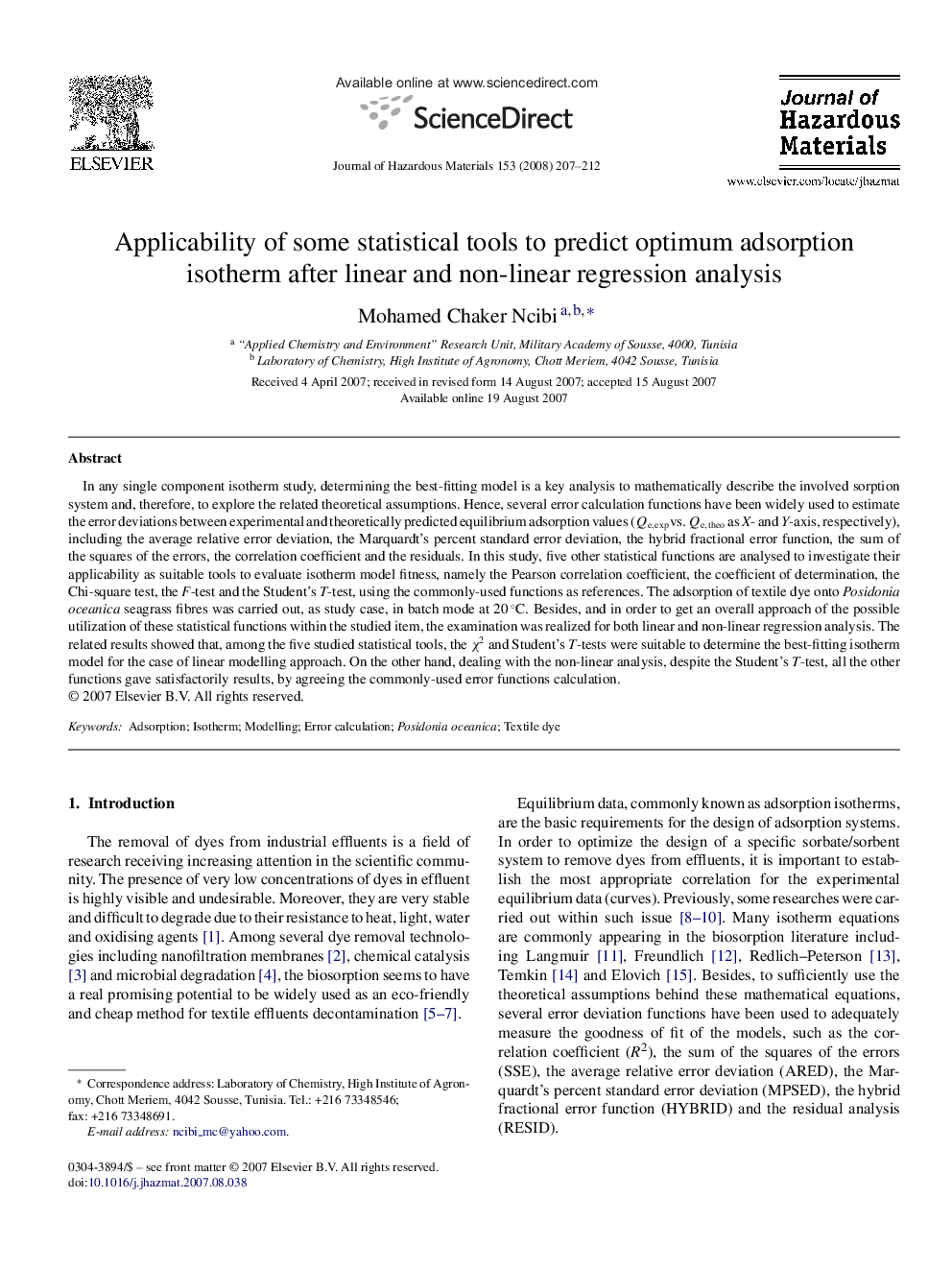| Article ID | Journal | Published Year | Pages | File Type |
|---|---|---|---|---|
| 583101 | Journal of Hazardous Materials | 2008 | 6 Pages |
Abstract
In any single component isotherm study, determining the best-fitting model is a key analysis to mathematically describe the involved sorption system and, therefore, to explore the related theoretical assumptions. Hence, several error calculation functions have been widely used to estimate the error deviations between experimental and theoretically predicted equilibrium adsorption values (Qe,expvs.Qe,theo as X- and Y-axis, respectively), including the average relative error deviation, the Marquardt's percent standard error deviation, the hybrid fractional error function, the sum of the squares of the errors, the correlation coefficient and the residuals. In this study, five other statistical functions are analysed to investigate their applicability as suitable tools to evaluate isotherm model fitness, namely the Pearson correlation coefficient, the coefficient of determination, the Chi-square test, the F-test and the Student's T-test, using the commonly-used functions as references. The adsorption of textile dye onto Posidonia oceanica seagrass fibres was carried out, as study case, in batch mode at 20 °C. Besides, and in order to get an overall approach of the possible utilization of these statistical functions within the studied item, the examination was realized for both linear and non-linear regression analysis. The related results showed that, among the five studied statistical tools, the Ï2 and Student's T-tests were suitable to determine the best-fitting isotherm model for the case of linear modelling approach. On the other hand, dealing with the non-linear analysis, despite the Student's T-test, all the other functions gave satisfactorily results, by agreeing the commonly-used error functions calculation.
Related Topics
Physical Sciences and Engineering
Chemical Engineering
Chemical Health and Safety
Authors
Mohamed Chaker Ncibi,
